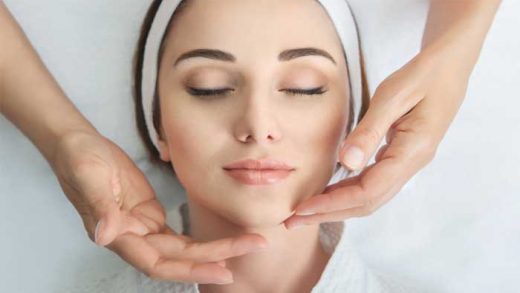Hair care is an integral aspect of personal grooming, and at the forefront of this regimen are two essential products: shampoo and conditioner. These dynamic duo play pivotal roles in maintaining the health, appearance, and manageability of our hair. In this comprehensive exploration, we delve into the intricate world of shampoo and conditioner, unraveling their formulations, benefits, and the evolving trends that shape the hair care industry.
Shampoo: The Cleansing Ritual
Shampoo is the cornerstone of any hair care routine, serving as the primary agent for cleansing the hair and scalp. Its formulation is a delicate balance of detergents, surfactants, and conditioning agents designed to remove dirt, oil, and product build-up without compromising the natural oils that keep hair healthy. Traditional shampoos, often water-based, utilize a combination of synthetic and natural ingredients to achieve this delicate equilibrium.
The key to an effective shampoo lies in its ability to clean thoroughly without causing damage or dryness. Common ingredients include surfactants like sodium lauryl sulfate, which creates lather and helps remove oil, and emollients like silicones or natural oils to provide a softening effect. Additionally, specialized shampoos catering to specific needs, such as volumizing, moisturizing, or color-protecting, have become commonplace, offering consumers a diverse array of choices tailored to their unique hair concerns.
In recent years, there has been a surge in demand for sulfate-free and natural ingredient-based shampoos, reflecting a broader consumer shift towards clean beauty. As environmental consciousness grows, brands are also exploring sustainable packaging options, aligning with the global push towards eco-friendly practices.
Conditioner: Nourishing the Strands
Shampoo cleanses, while conditioner nourishes and protects. It plays a crucial role in replenishing moisture, improving texture, and enhancing the overall manageability of the hair. Conditioners typically contain emollients, humectants, and proteins that work in tandem to provide hydration, seal the cuticle, and strengthen the hair shaft.
Emollients, such as fatty alcohols and natural oils, contribute to the conditioner’s smoothing effect, making detangling easier and leaving the hair with a silky finish. Humectants, like glycerin, attract and retain moisture, preventing dryness and frizz. Proteins, such as keratin, repair damaged hair by filling in gaps along the hair shaft, promoting strength and resilience.
Similar to shampoos, conditioners have witnessed a surge in specialized formulations. Deep conditioners, leave-in conditioners, and color-protecting conditioners cater to specific needs and preferences. The market also embraces the diversity of hair types and textures, offering solutions for curly, straight, fine, or coarse hair.
In response to the demand for cleaner beauty products, many conditioners now boast sulfate-free, paraben-free, and cruelty-free formulations. Brands are increasingly incorporating natural ingredients like argan oil, coconut oil, and shea butter, capitalizing on the perceived benefits of these botanical extracts.
The Symbiotic Relationship
The relationship between shampoo and conditioner is symbiotic, with each product complementing the other to achieve optimal hair health. Shampoo cleanses the hair and scalp, preparing the canvas for the conditioning stage. Conditioner, in turn, replenishes moisture, provides nourishment, and restores the hair to its ideal state.
Understanding one’s hair type and specific needs is paramount in selecting the right combination of shampoo and conditioner. Fine, oily hair may benefit from a volumizing shampoo paired with a lightweight conditioner, while coarse, dry hair might require a moisturizing shampoo and a deeply nourishing conditioner.
Innovations and Trends
The hair care industry is dynamic and constantly evolving to meet the ever-changing needs and preferences of consumers. Innovations in formulation and packaging continue to shape the landscape of shampoo and conditioner products.
One notable trend is the rise of personalized hair care. Brands are leveraging technology to offer customized solutions, allowing consumers to tailor their shampoo and conditioner formulations based on their unique hair profiles, preferences, and concerns. This shift towards personalization reflects a broader movement in the beauty industry, where one-size-fits-all approaches are giving way to individualized experiences.
Sustainable packaging is another forefront trend. With increasing environmental awareness, brands are exploring eco-friendly materials and refillable options to reduce the ecological footprint of their products. Consumers are more conscious than ever about the environmental impact of their beauty routines, prompting a demand for responsible packaging practices.
Conclusion: Nurturing Your Locks
In the intricate dance of hair care, shampoo, and conditioner take center stage, offering a harmonious routine that cleanses, nourishes, and enhances the beauty of our locks. The choices available today cater to a diverse array of needs and preferences, allowing individuals to craft a personalized regimen that aligns with their unique hair characteristics.
As the beauty industry continues to innovate, the future of shampoo and conditioner holds exciting possibilities. Whether it’s the integration of cutting-edge technologies for personalized formulations or a heightened commitment to sustainability, the journey towards healthier, more beautiful hair is sure to be an ever-evolving and enriching experience.



